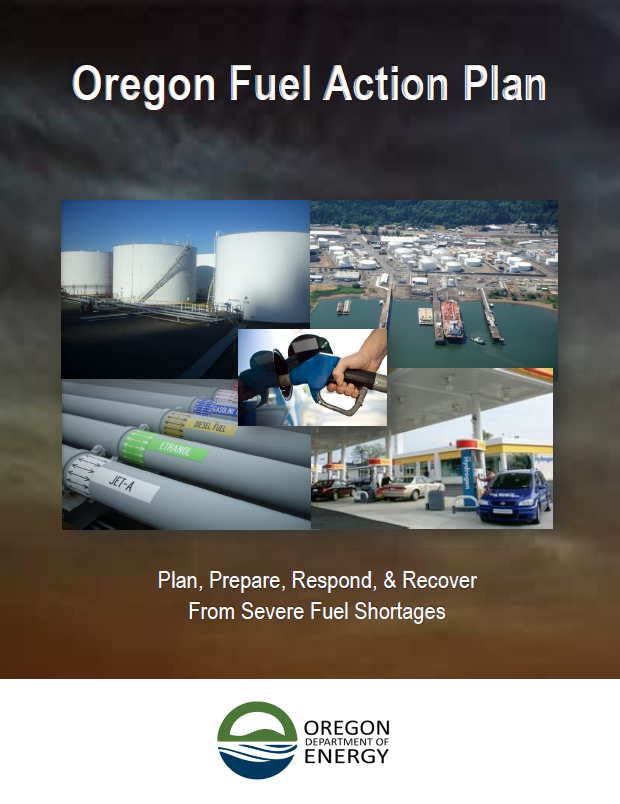The Oregon Fuel Action Plan outlines the Oregon Department of Energy's response to severe or long-term petroleum shortages or disruptions that could affect our state.

Oregon receives more than 90 percent of its refined petroleum products
from four refineries in the Puget Sound area of Washington state. The
refineries transport their products to Oregon through the Olympic Pipeline
and by barge. The bulk of Oregon’s oil enters through the Port of Portland to
seven petroleum delivery stations located on the Willamette River near Swan
Island.
While the current system of supplying and distributing petroleum
products in Oregon is effective, the state has virtually no refining capacity
and no crude oil reserves; therefore, Oregon faces unique challenges in the
event of a petroleum shortage.
Risks
The Oregon Department of Energy first began fuel planning efforts in response to the 1970s fuel crisis in the United States. ODOE's planning has evolved to the changing and current threats to the region's petroleum infrastructure
In the Pacific Northwest, the most likely catastrophic event would be a severe Cascadia Subduction Zone (CSZ) earthquake. A CSZ earthquake would devastate our petroleum supply and distribution system, including our primary refineries in Washington, Portland's "fuel hub," and our pipelines. Restoring the system could take months or even years.
Oregon Fuel Action Plan
The
Oregon Fuel Action Plan outlines how ODOE would respond in an emergency that could affect access to fuel. The Plan addresses how we would access gasoline and diesel in Oregon, and how we would distribute fuel to state emergency services such as law
enforcement, fire, and medical services, and to essential service providers
that include utilities, telecommunications, public works, public transit, and
sanitation services.
An ODOE official or a state designee (as appropriate)
would implement the plan by coordinating a rapid response from industry,
federal, state, and local organizations with a goal to restore the fuel supply
and distribution system while minimizing the effect to Oregonians. Find examples of the Oregon Fuel Action Plan in action on our
blog.